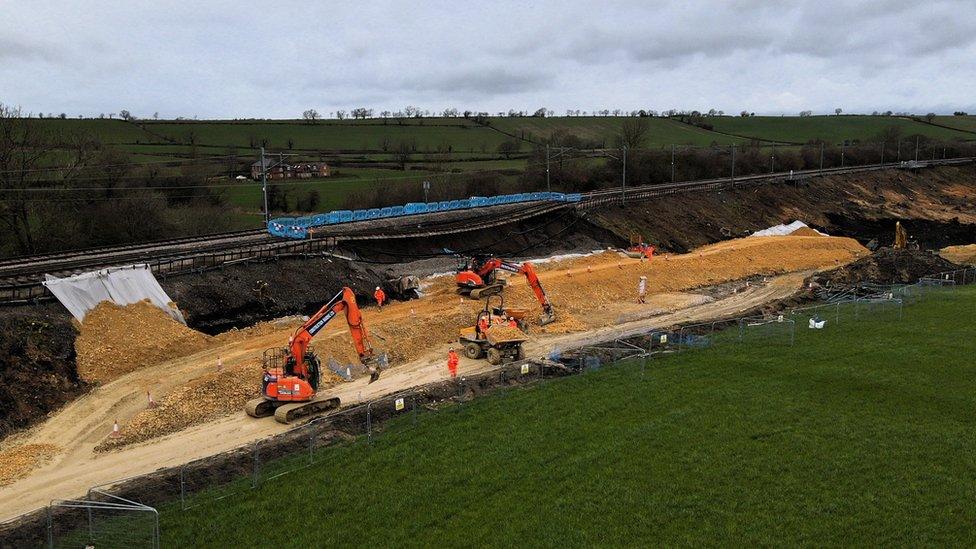Old Dalby: Work to repair landslip-hit railway test track begins
- Published

The line was originally used as an operational railway in 1879
Work has started to repair a railway test site in Leicestershire after a landslip forced the line to close.
The Old Dalby test track was used to test new trains and technology prior to the landslip, which happened in December.
Engineers have started to remove 17,000 tonnes of soil and other vegetation from the site.
Network Rail said about 19,500 tonnes of material would be used to reconstruct the full embankment.
A new drainage system is set to be put in place to help prevent future landslips at the site, while 869ft (265m) of track will replaced, including the installation of new overhead line equipment.
Work on the 13-mile route, which runs between Melton Mowbray and Edwalton in Nottinghamshire, is expected to be completed in the summer.
Julia Territt, a director at Network Rail, said: "We have a clear programme of work to repair the site of the landslip with an estimated completion date of summer 2024.
"We want to thank local residents for their patience while the work is ongoing."
Bad weather conditions and limited access meant work was only able to start at the site of the landslip recently, said Network Rail.
The line at Old Dalby was converted into a test site in 1966 with the line forming part of the wider Rail Innovation and Development Centre in Melton.
It has been used to test new trains and technology ahead of their use on the operational railway.
Network Rail said its engineers will mainly be working during the day and will use a remotely controlled solar powered generator to power the site to reduce noise.

Follow BBC East Midlands on Facebook, external, on X, external, or on Instagram, external. Send your story ideas to eastmidsnews@bbc.co.uk, external or via WhatsApp, external on 0808 100 2210.
Related topics
- Published14 May 2015

- Published11 March 2024

- Published6 February 2024
